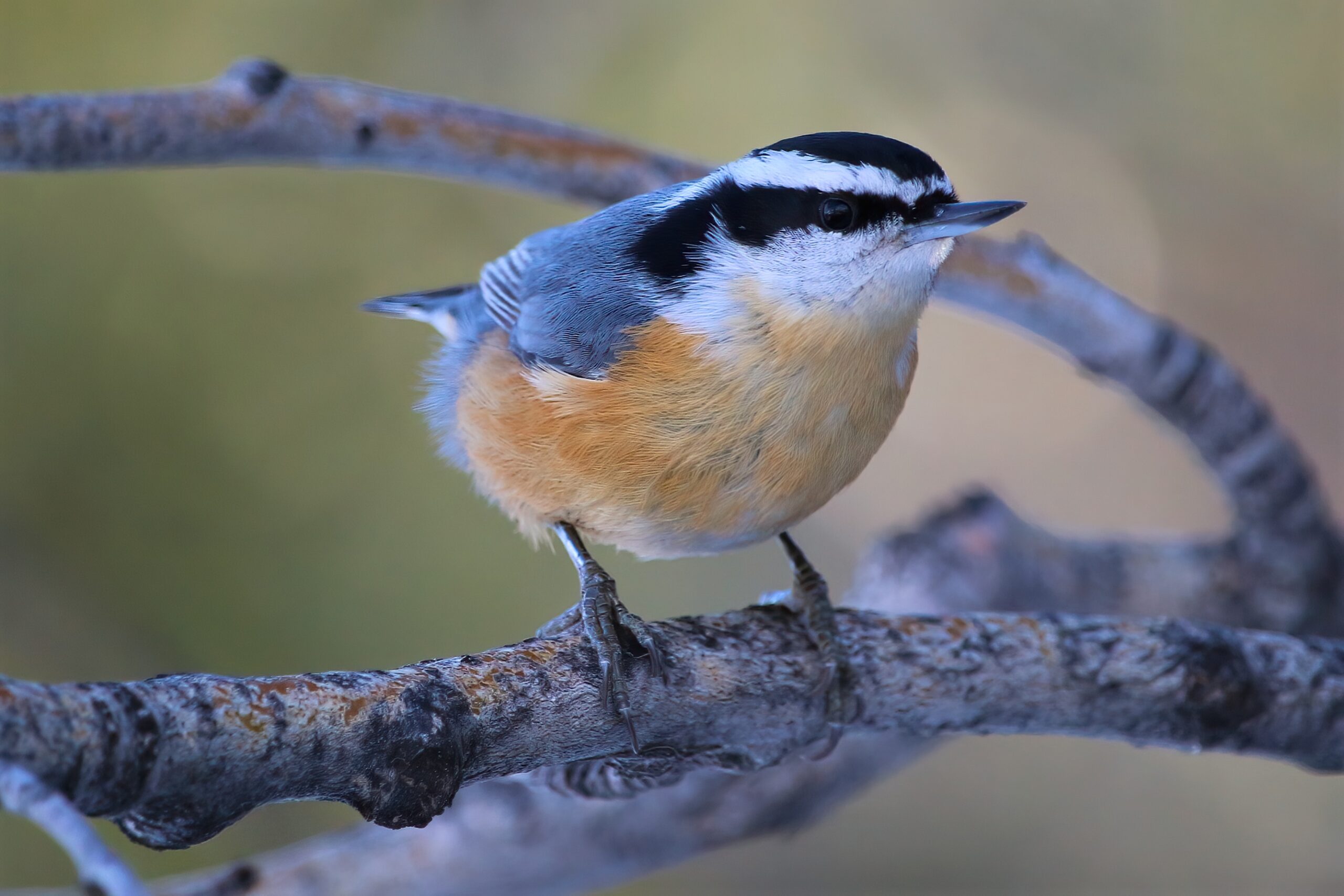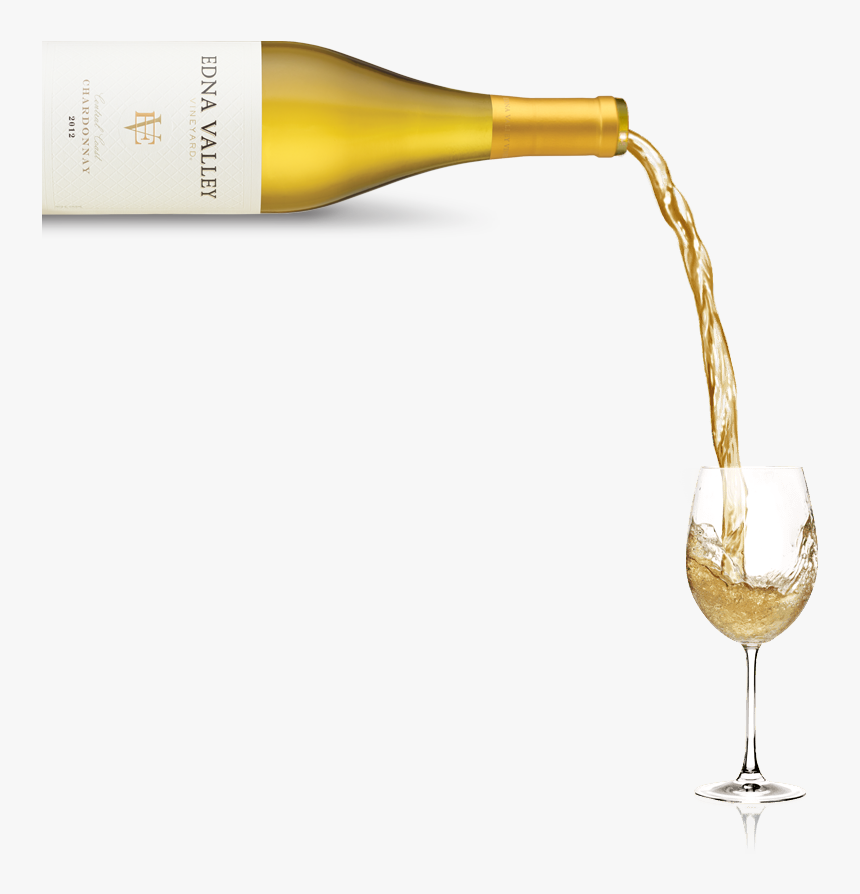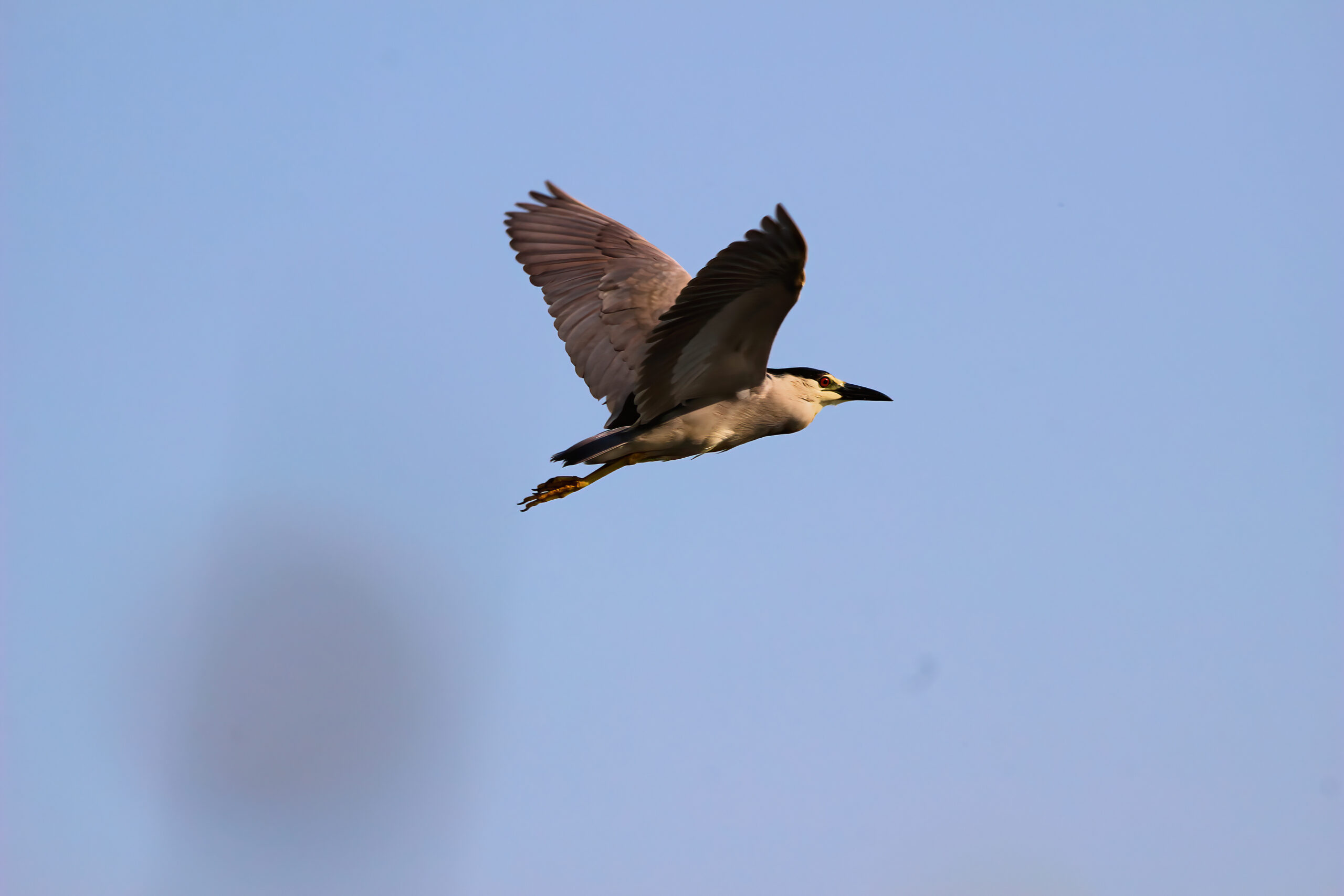Known by a variety of names, the “upside-down bird” in Newfoundland, “tomtit” in Nova Scotia, “cardy bird” in New Brunswick, and “little quank” in Ontario, the red-breasted nuthatch is truly a bird of energy and character, if you should happen to see one or more.
Blessed with short legs and tail, a large head, flat body accompanied by a long, slightly upturned bill, this species of the 17 known nuthatch species, makes birding enjoyable. A handsome bird, this nuthatch has a white eyebrow stripe, set off by a black stripe through the eye. Sporting a top of head and neck that are black, the back, wings and short tail are a grayish-blue hue. The radiant rusty color of the nuthatch’s underparts, more intense on the male, gives this species its name. What I love about the nuthatch is its version of the “sound of music”, consisting of a high-pitched pig-like or mouse-like squeal followed by a series of rapids “kicks”. A territorial song this species uses a long string of nasal notes, consisting of “nya-nya-nya” or “yaaaaa”. Another sound emitted is a “yank-yank” call, heard well before one sees the nuthatch. When two or more of these birds get scrapping on a conifer branch, well, it’s hard not to laugh as the audio track of “conflict” is sensational.
What makes nuthatches unique is the ability to descend head downwards on tree trunks and branches, all the while searching the nooks and crannies in the bark for insects and larvae. Moving quickly, it is a challenge to have the nuthatch pose long enough for a photographer and hence my fascination with this species. With this nimble ability to live an upside-down life, nature has provided the nuthatch with some physical characteristics to help. The nuthatch has a greatly enlarged hind toe to provide secure footing coupled with a very short tail, where a longer one might get in the way of movement. Conifer tree seeds make up the winter diet, while in insects and larva, more abundant in spring and summer, become a focus.
Fortunately red-breasted nuthatches live in Alberta year-round, making it a species to engage anyone interested in birds. The key though in our City of Chestermere, is to look for stands of conifer trees, such as white spruce and pine, as these are the desired tree species that provide much for nuthatches. In the past few years we have had one enjoy the large spruce tree habitat along the Cove walking trail. On occasion, it would explore our yard looking at what was available in the feeders, before making an exit. Listen for the call “yank-yank” and you will be on the trail of the red-breasted nuthatch.







